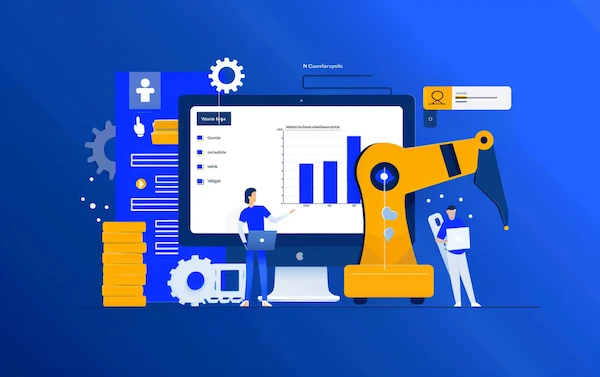Business Process Management (BPM) is a complex but essential task for organizations of all sizes. One effective way to maximize the benefits of BPM is through Business Process Automation (BPA).
BPA involves three key phases:
Phase 1: Initiation
Phase 2: Achieving Success Post-Implementation
Phase 3: Continuous Review and Adjustment
Many businesses find themselves in the first two phases, navigating the challenges of digital transformation. To fully unlock the potential of BPA, it must be implemented thoughtfully and strategically.
Nine Major Challenges in Business Process Automation:
- Automation Can’t Fix Flawed Processes:
While BPA can greatly enhance efficiency, save costs, and free up staff for more valuable tasks, it cannot rectify fundamentally broken processes. Automating poor processes only perpetuates existing issues, so it’s crucial to first refine processes that have clear rules and reliable data inputs. - Limited Adoption Across the Organization:
For BPA to be effective, company-wide adoption is critical. Consistency is key, and change can be challenging. Securing executive buy-in and involving key stakeholders ensures alignment with overall business goals and helps drive adoption across departments. - Confident Deployment:
Deploying new technology is often a significant hurdle. To make informed decisions, utilize simulation tools that model processes based on your data. This allows you to anticipate potential issues and confidently implement changes. - Avoiding One-Size-Fits-All Solutions:
Automation isn’t a one-size-fits-all solution. Different technologies serve different purposes—RPA for repetitive tasks, intelligent workflows for complex processes, etc. It’s essential to match the right technology to the specific needs of your processes. - Adapting to Remote Work:
The shift to remote work has necessitated changes in business processes. Automation should be tailored to facilitate remote collaboration, ensuring that workflows are seamless and accessible,
regardless of location. - Tackling Too Much at Once:
The temptation to overhaul everything at once can lead to frustration and burnout. Start small and scale gradually. By mastering simpler processes first, you can build the expertise needed to tackle more complex automation projects. - Systems and Infrastructure Integration:
Automation requires a scalable, flexible infrastructure. Cloud-based solutions offer greater scalability and ease of integration, allowing seamless connections across multiple systems and workflows. - Defining Success Before Implementation:
Without clear success metrics, it’s difficult to measure the effectiveness of BPA. Define your goals be it cost savings, productivity gains, or improved customer satisfaction—so you can track and demonstrate the value of your automation initiatives. - Planning for Scalability:
Short-term gains are important, but long-term scalability is crucial. Ensure that your automation solutions can grow with your business, by using cloud-based platforms that offer flexibility as your needs evolve.
By understanding these challenges and planning accordingly, you can implement BPA in a way that not only meets your immediate needs but also supports your long-term business objectives




